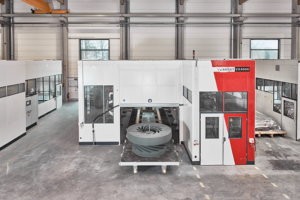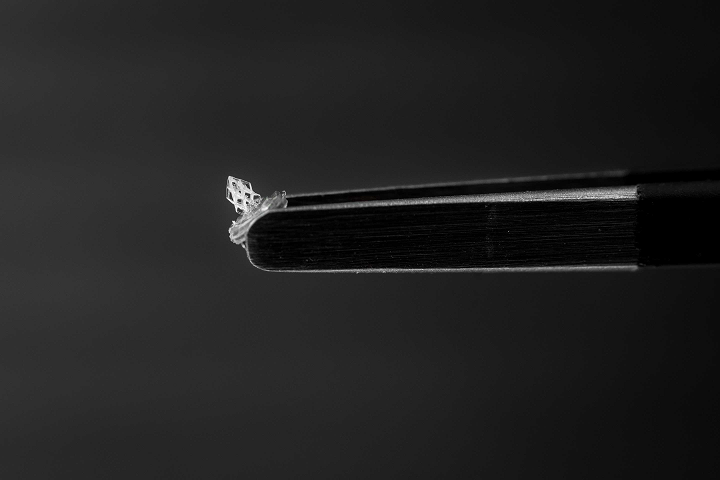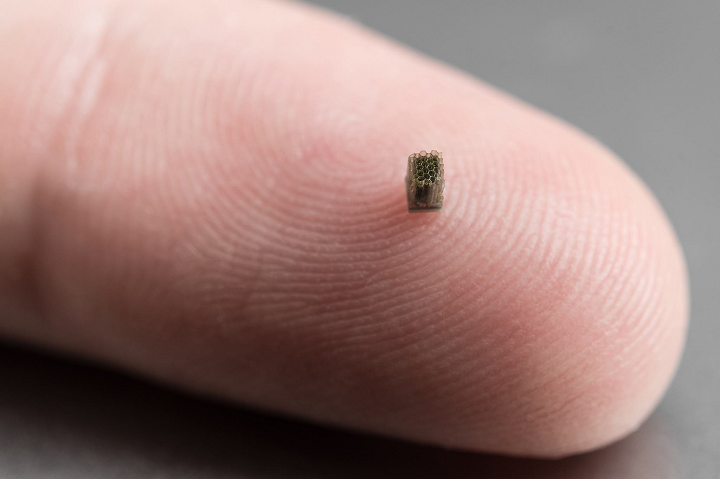3D Printing News Briefs: May 12, 2020 Nanofabrica, Voxeljet, Elementum, AMPOWER
We’re all business today in 3D Printing News Briefs – Nanofabrica has raised $4 million in funding, and voxeljet is expanding its presence in India. Elementum 3D has achieved an important industry certification. Finally, AMPOWER has released its 2020 report.
Nanofabrica Raises $4 Million in Funding
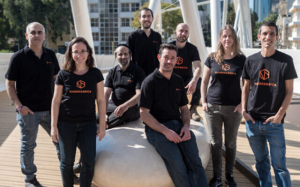 Tel Aviv startup Nanofabrica, which makes 3D printers for fabricating complex electronic and optical parts for semiconductors and medical devices, has raised $4 million in funding, and the round was led by Microsoft’s venture arm M12, which invests in enterprise software companies in Series A through C funding with a focus on infrastructure, applied AI, business applications, and security, and NextLeap Ventures, an investor group made of former Intel Corp employees. The startup says it will use the funding – it’s raised a total of $7 million so far – to expand its sales and continue its R&D work.
Tel Aviv startup Nanofabrica, which makes 3D printers for fabricating complex electronic and optical parts for semiconductors and medical devices, has raised $4 million in funding, and the round was led by Microsoft’s venture arm M12, which invests in enterprise software companies in Series A through C funding with a focus on infrastructure, applied AI, business applications, and security, and NextLeap Ventures, an investor group made of former Intel Corp employees. The startup says it will use the funding – it’s raised a total of $7 million so far – to expand its sales and continue its R&D work.
M12 partner Matthew Goldstein said, “Nanoscale, precision manufacturing is a growing need for R&D organizations, as well as production-scale manufacturing companies,” and that the technology allows for the “digital mass manufacturing of precision parts.”
voxeljet Grows Presence in India with Sale of VX4000
Industrial 3D printing solutions provider voxeljet AG has expanded its Asian presence with the announcement that Indian steel casting experts Peekay Steel Castings Pvt Ltd is investing in its 4000 x 2000 x 1000 mm VX4000 3D printer – the company’s largest industrial system. Peekay Steel, which makes high-quality steel castings, will use the printer to expand into new business areas and better cater to its current clients’ increasing demands. The flexibility, size, and speed of the VX4000 will allow the company to continue supporting the foundry industry in its native India, but also give them the opportunity to build a new Knowledge Center centered around the large 3D printer that will provide open access to a training facility. The VX4000 will be set up at a new Bangalore location in the Airport City.
“We want to offer our customers an end-to-end solution and position ourselves as a supplier of high-quality, ready-to-install components in record times. With the VX4000, we are able to increase the flexibility of our production in order to be able to react quickly, even to complex projects,” said K.E. Shanavaz, Jt., Managing Director, Peekay Steel Castings (P) Ltd. “3D printing gives us a unique competitive advantage, especially when it comes to expanding our business areas. Since the beginning, we have emphasized the importance of co engineering with our customers, most of these are Fortune 500 companies, to optimize and customize the product design, to lend better functionality and a clear competitive advantage. A specialized Design Center aligned to the VX4000 will help add value for our customers.”
Elementum 3D Achieves Quality Management Certification
 Colorado metal 3D printing materials company Elementum 3D announced that it has received the important ISO 9001:2015 certification. This is recognized as the worldwide standard for quality management practices and systems, and was issued to the company through the Denver-based ISO 9001 management certification firm Platinum Registration, Inc. The scope of its certification includes manufacturing prototype and production parts to customer specifications, designing and manufacturing advanced composites, metals, and superalloys, and developing new manufacturing processes.
Colorado metal 3D printing materials company Elementum 3D announced that it has received the important ISO 9001:2015 certification. This is recognized as the worldwide standard for quality management practices and systems, and was issued to the company through the Denver-based ISO 9001 management certification firm Platinum Registration, Inc. The scope of its certification includes manufacturing prototype and production parts to customer specifications, designing and manufacturing advanced composites, metals, and superalloys, and developing new manufacturing processes.
“This is an important milestone for Elementum 3D. It’s a rigorous process to become ISO 9001 certified. Our staff worked very hard with Platinum Registration’s auditors to demonstrate we meet the requirements of the standard. Not only does that make us feel confident we’re the most efficient that we can be, it assures our customers that we have a completely transparent and robust management system; and that means we have reliable, repeatable, continuously improving business processes so that our customers receive the best value for their money,” said Dr. Jacob Nuechterlein, Elementum 3D President and Founder.
AMPOWER Releases 2020 Metal AM Report
 Metal additive manufacturing consultancy AMPOWER has released its new 2020 report, containing analysis based on over 250 data sets of metal AM supplier and user surveys. If you purchased the previous AMPOWER Report, you can get the latest edition for free through the online portal, or you could subscribe to the report to start getting it; either way, the publication is chock-full of helpful information. For instance, a separate section analyzes the possible impact scenarios of the COVID-19 pandemic on the metal AM industry in both 2020 and 2021, and new contributions from the worlds of standards and startups are included from ASTM and AM Ventures, respectively. The report includes in-depth market data, and has also added new databases with over 700 entries, so readers can browse through a list of material, service, and systems suppliers; the new interactive cost calculator has been updated with the most recent productivity values.
Metal additive manufacturing consultancy AMPOWER has released its new 2020 report, containing analysis based on over 250 data sets of metal AM supplier and user surveys. If you purchased the previous AMPOWER Report, you can get the latest edition for free through the online portal, or you could subscribe to the report to start getting it; either way, the publication is chock-full of helpful information. For instance, a separate section analyzes the possible impact scenarios of the COVID-19 pandemic on the metal AM industry in both 2020 and 2021, and new contributions from the worlds of standards and startups are included from ASTM and AM Ventures, respectively. The report includes in-depth market data, and has also added new databases with over 700 entries, so readers can browse through a list of material, service, and systems suppliers; the new interactive cost calculator has been updated with the most recent productivity values.
“We hope the AMPOWER Report 2020 continues to support our customers in making the right decisions in these challenging times,” AMPOWER’s Matthias Schmidt-Lehr, Dr. Maximilian Munsch, and Dr. Eric Wycisk wrote in an email.
Discuss these stories and other 3D printing topics at 3DPrintBoard.com or share your thoughts in the Facebook comments below.
The post 3D Printing News Briefs: May 12, 2020 Nanofabrica, Voxeljet, Elementum, AMPOWER appeared first on 3DPrint.com | The Voice of 3D Printing / Additive Manufacturing.
3D Printing Industry News Sliced: Sonda SYS, Sintratec, Nanofabrica, DMG MORI, RPS, PostProcess
3D Printing Industry News Sliced: Nano Dimension, Protolabs, Lockheed Martin, CRP, Prusa, Siemens
Nanofabrica joins Siemens-Dynamo startup commercialization program
3D Printing News Briefs: April 21, 2019
We’re beginning with an aerospace 3D printing story in 3D Printing News Briefs today, then moving on to news about some upcoming industry events and finishing with a little business. Launcher tested its 3D printed rocket engine on an important date in history. DuPont will be introducing new semi-crystalline 3D printing products at RAPID + TCT, and Nanofabrica has offered to 3D print micro parts at no cost for interested companies attending the annual euspen conference. Ira Green Inc. used Rize technology to transform its production process, GOM is now part of the Zeiss Group, and the Ivaldi Group received its ISO 9001:2015 certification.
Launcher Tests 3D Printed Rocket Engine
 New York startup Launcher, which uses EOS technology to create 3D printed components for metal rocket engines, has completed many firing tests with these parts over the last year and a half. Recently, on the anniversary of the date the first human left Earth to go into space, the startup announced the results of the latest test.
New York startup Launcher, which uses EOS technology to create 3D printed components for metal rocket engines, has completed many firing tests with these parts over the last year and a half. Recently, on the anniversary of the date the first human left Earth to go into space, the startup announced the results of the latest test.
Launcher’s founder and CEO Max Haot posted on his LinkedIn account that the E-1 copper bi-metal rocket engine, which was 3D printed on the EOS M290, broke the startup’s combustion pressure record at 625 psi, mr 2.5. It will be interesting to see how the engine performs on its next test.
DuPont to Introduce New Semi-Crystalline Materials
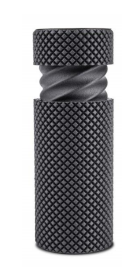 At next month’s RAPID + TCT in Detroit, DuPont Transportation & Advanced Polymers (T&AP), a DowDuPont Specialty Products Division business, will be launching an expansion to its 3D printing portfolio: advanced, high-performance semi-crystalline materials, which will give customers more manufacturing agility and open new opportunities to lower costs while increasing production.
At next month’s RAPID + TCT in Detroit, DuPont Transportation & Advanced Polymers (T&AP), a DowDuPont Specialty Products Division business, will be launching an expansion to its 3D printing portfolio: advanced, high-performance semi-crystalline materials, which will give customers more manufacturing agility and open new opportunities to lower costs while increasing production.
Jennifer L. Thompson, Ph.D., R&D programs manager for DuPont T&AP, will be presenting a technical paper about the materials during the event as part of the Material Development and Characterization session. During her presentation at 10:15 am on May 23rd, Thompson will discuss alternative 3D printing methods, like pellet extrusion modeling, in addition to highlighting new engineering materials and talking about tailored material testing programs. Thompson and other DuPont employees will be at DuPont T&AP’s booth #552 at RAPID to answer questions about the company’s 3D printing materials.
Nanofabrica Offers Free 3D Printing Services for euspen Attendees
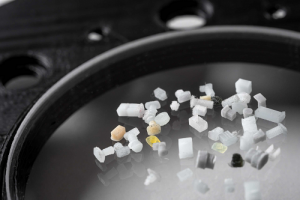 Last month, Israeli 3D printing startup Nanofabrica announced the commercial launch of its micro resolution 3D printing platform. In order to show off the system’s abilities to potential customers, Nanofabrica has made an enticing offer to attendees at next month’s euspen conference and exhibition in Spain: the startup will print parts for interested companies at no charge. Then, the parts printed on the new micro AM platform will be presented to them at the event, which focuses on the latest technological developments that are growing innovation at the micron and sub-micron levels.
Last month, Israeli 3D printing startup Nanofabrica announced the commercial launch of its micro resolution 3D printing platform. In order to show off the system’s abilities to potential customers, Nanofabrica has made an enticing offer to attendees at next month’s euspen conference and exhibition in Spain: the startup will print parts for interested companies at no charge. Then, the parts printed on the new micro AM platform will be presented to them at the event, which focuses on the latest technological developments that are growing innovation at the micron and sub-micron levels.
“It’s quite simple really. We believe that the best way to prove what our AM system can do, how high the resolution and accuracy of the parts we make are, is to manufacture parts for attendees,” Jon Donner, the CEO of Nanofabrica explained. “Registered attendees are welcome to send us their files, and we will examine and print them. That is how confident we are that you will be amazed by the capabilities of our system, and this we feel will mean that we can forge meaningful relationships with manufacturers that will endure into the future.”
Rize 3D Printing Transformed Company’s Production Process
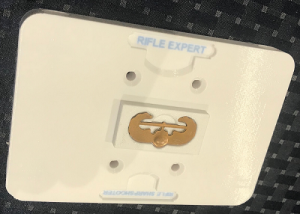 Rhode Island-based IRA Green Inc. (IGI), a full-service manufacturer and distributor of unique uniform items earned and worn by military personnel around the world, recently turned to RIZE and its 3D printing capabilities in order to manufacture small fixtures for its tool shop. The company’s products are in high demand, but lead times were growing longer due to bottlenecks and 8 hours of work for each $300 fixture. Precision is also important for these parts, which is why IGI decided to turn to the RIZE ONE hybrid 3D printer. According to a new case study, IGI’s design team uses the printer every day to manufacture accurate fixtures in just 50 minutes for $2.00 a part. Using the RIZE ONE, which has the unique capability of adding ink markings to parts for verification, the company has been able to standardize its nails and molds, which helped lead to an ROI in less than five months.
Rhode Island-based IRA Green Inc. (IGI), a full-service manufacturer and distributor of unique uniform items earned and worn by military personnel around the world, recently turned to RIZE and its 3D printing capabilities in order to manufacture small fixtures for its tool shop. The company’s products are in high demand, but lead times were growing longer due to bottlenecks and 8 hours of work for each $300 fixture. Precision is also important for these parts, which is why IGI decided to turn to the RIZE ONE hybrid 3D printer. According to a new case study, IGI’s design team uses the printer every day to manufacture accurate fixtures in just 50 minutes for $2.00 a part. Using the RIZE ONE, which has the unique capability of adding ink markings to parts for verification, the company has been able to standardize its nails and molds, which helped lead to an ROI in less than five months.
IGI’s Manufacturing Manager, Bill Yehle said, “Implementing RIZE 3D printing as part of a strategic process shift has completely transformed our production process.
“We have realized an 80% time savings in setup and changeover alone using RIZE and virtually eliminated errors.”
ZEISS Group Acquires GOM
 In an effort to expand its industrial metrology and quality assurance portfolio, the ZEISS Group, a technology enterprise operating in the optics and optoelectronics fields, has acquired GOM, which provides hardware and software for automated 3D coordinate measuring technology. By combining GOM’s optical 3D measuring technology with its own products, ZEISS could expand market access, and create new opportunities, for its Industrial Quality & Research segment. Once the transaction is complete, which should happen soon, GOM will become part of this ZEISS segment, while the legal form of its companies in Germany and elsewhere will stay the same. The financial details of the transaction will not be discussed publicly.
In an effort to expand its industrial metrology and quality assurance portfolio, the ZEISS Group, a technology enterprise operating in the optics and optoelectronics fields, has acquired GOM, which provides hardware and software for automated 3D coordinate measuring technology. By combining GOM’s optical 3D measuring technology with its own products, ZEISS could expand market access, and create new opportunities, for its Industrial Quality & Research segment. Once the transaction is complete, which should happen soon, GOM will become part of this ZEISS segment, while the legal form of its companies in Germany and elsewhere will stay the same. The financial details of the transaction will not be discussed publicly.
“Our growth strategy expressly mentions the targeted acquisition of highly innovative solutions, technologies and companies, which can reach their full potential as part of the ZEISS Group. By acquiring GOM and thereby expanding our solutions portfolio, we are bolstering the leading position of our Industrial Quality & Research segment and will be able to offer even better solutions for our customers. This is entirely in keeping with our corporate strategy, which is focused on our customers’ success,” said Dr. Michael Kaschke, President & CEO of ZEISS.
Ivaldi Group Awarded ISO 9001:2015 Certification
 California startup Ivaldi Group, which uses 3D printing and metal fabrication solutions to provide in-port parts on-demand services for the maritime, mining, offshore, and construction industries has become ISO 9001:2015 certified in less than ten months. This standard, which is certifies quality managements systems that focus on customer satisfaction, continuous improvement, and active involvement of employees and management in a process-based approach, is the first step in the certification process that’s required to certify specific products. This proves Ivaldi’s commitment to constantly improving itself.
California startup Ivaldi Group, which uses 3D printing and metal fabrication solutions to provide in-port parts on-demand services for the maritime, mining, offshore, and construction industries has become ISO 9001:2015 certified in less than ten months. This standard, which is certifies quality managements systems that focus on customer satisfaction, continuous improvement, and active involvement of employees and management in a process-based approach, is the first step in the certification process that’s required to certify specific products. This proves Ivaldi’s commitment to constantly improving itself.
“Certifying our quality management system has helped us to structure our processes to create a solid foundation. This will allow us to improve efficiency, productivity, and traceability,” said Anna D’Alessio, Quality Management Specialist of Ivaldi Group. “Global quality management systems are important to align processes and optimize operations across facilities. This certification proves our commitment to meet requirements of stakeholders affected by our work.”
Discuss these stories and other 3D printing topics at 3DPrintBoard.com or share your thoughts in the Facebook comments below.
3D Printing News Sliced: Titomic, Barclays, AMUG, Formnext + PM South China, Desktop Metal
Nanofabrica Releases Micron Resolution 3D Printing Platform Aimed at Industrial Applications
Israeli 3D printing startup Nanofabrica, which was founded in 2016 and chosen by the the I-YBI collaborative in 2017 to get help entering the American market, is working to mass-produce 3D printed parts on the micro and nanoscale. Now, its hard work has paid off, as the company just commercially launched, in the words of CEO Jon Donner, a true “mass manufacturing” micron resolution that’s targeted directly at pan-industrial micro manufacturing applications expanding throughout sectors like aerospace, automotive, medical, optics, and semiconductor.
Most manufacturers looking to fabricate tiny components and product in volume, with features at the micron resolution, have had to use more traditional micro molding and machining technologies. But the startup’s micro 3D printing process is cost-effective and fast, with the ability to achieve highly accurate results.
“The discipline of Additive Manufacturing (AM) or 3D Printing (3DP) is regularly cited as being disruptive to traditional manufacturing processes,” Donner wrote.
“AM has made the shift from a prototyping technology to a true production technology, but many lack the insight about what can really be produced on AM platforms, and the inherent characteristics of the process that add significant advantages when it come to cost, complexity, and timeliness of manufacture.”
3D printer manufacturers are doing what they can to combat adoption barriers, and are refining their technologies by adding valuable features or looking for niches that are under-served, or not even served at all…such as micro manufacturing.
“When viewed from the perspective that across industry today there is an inexorable shift towards miniaturisation, with many applications demanding extremely exacting levels of micron and sub-micron precision on macro and micro parts, there is huge potential for an AM platform that can service this trend,” Donner stated. “A whole raft of traditional production platforms have developed to cater for this demand, but until recently, the ability for AM to produce such precision at all —let alone at volume production levels — has been impossible.”
Nanofabrica develops its own proprietary materials, focusing on common plastics like ABS and PP. Its AM platform is perfectly tailored for micro and nano manufacturing, and, according to TCT, is made up of two new 3D printers: the Industrial System, said to achieve a one-micron resolution with a 50 x 50 x 100 mm build volume, and the Workshop system. This provides manufacturers who need “micron and sub-micron levels of resolution and surface finish” with a bespoke end-to-end solution.
“Successful AM platform developers in today’s crowded market need to focus technological advances on areas that open up innovation and the manufacture of products and components hitherto impossible using AM,” Donner wrote. “It is here that Nanofabrica has been particularly successful, having identified a series of killer applications where there is burgeoning market demand, where the only route to market at the moment is through disproportionately expensive or restrictive traditional manufacturing technologies, and where the use of AM can open up significant advances on terms of design and functionality.
“These killer applications exist in the area of optics, semi-conductors, micro electronics, MEMS, micro fluidics, and life sciences. Products such as casing for microelectronics, micro springs, micro actuators and micro sensors, and numerous medical applications such as micro valves, micro syringes, and micro implantable or surgical devices.”
 Nanofabrica’s new 3D printers are based on a Digital Light Processor (DLP) engine, which is combined with adaptive optics to ensure repeatable micron levels of resolution – a necessary feature when creating cost-effective, highly precise components for industrial manufacturing. Additionally, the AM platform uses multiple sensors to allow for a closed feedback loop, which also helps deliver high accuracy.
Nanofabrica’s new 3D printers are based on a Digital Light Processor (DLP) engine, which is combined with adaptive optics to ensure repeatable micron levels of resolution – a necessary feature when creating cost-effective, highly precise components for industrial manufacturing. Additionally, the AM platform uses multiple sensors to allow for a closed feedback loop, which also helps deliver high accuracy.
The startup’s AM platform is also unique in how it combines several technologies in order to “achieve micron resolution over centimeter-sized parts.”
Donner explained, “Specifically, the company has taken its innovative use of adaptive optics and enhanced this imaging unit with technology and know-how used in the semiconductor industry (where the attainment of micron and sub-micron resolutions over many centimetres is routine.) By working at the intersection of semiconductors and AM, Nanofabrica is able to build large “macro” parts with intricate micro details. It can also do this at speed by introducing a multi resolution strategy, meaning that the parts where fine details are required are printed relatively slowly, but in the areas where the details aren’t so exacting, the part is printed at a speeds 10 to 100 times faster. This makes the entire printing speed anything from 5 to 100 times faster than other micro AM platforms.”
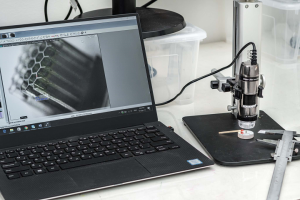 Nanofabrica’s hardware enables multi resolution capability due to “a trade off between speed and resolution,” while its software algorithms define and section off both the part and its 3D printing path into low and high resolution areas to be fed into the machine parameters and path. A “spectrum of resolutions” make it possible to optimize speed and achieve “satisfactory results,” while the “final algorithm family” is focused on file preparation and optimizing parameters like supports and print angle.
Nanofabrica’s hardware enables multi resolution capability due to “a trade off between speed and resolution,” while its software algorithms define and section off both the part and its 3D printing path into low and high resolution areas to be fed into the machine parameters and path. A “spectrum of resolutions” make it possible to optimize speed and achieve “satisfactory results,” while the “final algorithm family” is focused on file preparation and optimizing parameters like supports and print angle.
“Perhaps of key interest is the fact that AM is relatively agnostic to part complexity, and it is possible to design and manufacture unique geometries. As such, the Nanofabrica technology becomes an enabling technology, and a true stimulator of innovation, making the manufacture of parts and features previously impossible, possible,” Donner said.
“Nanofabrica is aware — as the first mover in the micro AM space for production — that it establishes a partnership relationship with its customers that extends from product inception through to mass manufacturing. The technology is today the only micron-resolution platform aimed at true manufacturing applications not just R&D projects, the real game changer being the combination of commercially-oriented build volumes, optimised materials, significant lines of investment, and a platform that is competitively priced.”
The startup is also an advocate of customer collaboration for the purposes of optimizing outcomes, and provides advice on design for additive manufacturing (DfAM), which is often used for macro AM platforms but not micro.
“It is because of this that Nanofabrica promotes a collaborative relationship with its customers to locate the opportunities and avoid the bear traps that exist when adopting — or considering adopting — AM for production purposes in the micro manufacturing arena,” Donner said.
Nanofabrica’s micro 3D printing platform is still new, which is another reason it’s looking to ” partner with key players in relevant sectors.” This will allow the startup to better customize its technology for specific applications in a variety of markets.
Discuss this and other 3D printing topics at 3DPrintBoard.com or share your thoughts below.
[Images provided by Nanofabrica]

